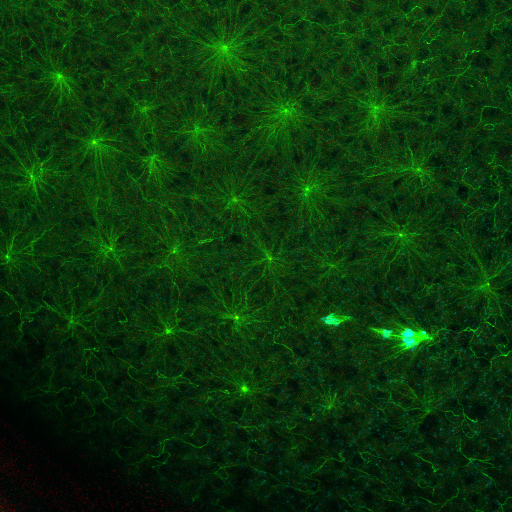New discovery on infertility

In a study co-funded by the FCT, a team of scientists from the Instituto Gulbenkian de Ciência (IGC) has established a correlation between the disappearance of centrioles - structures responsible for cell division - in female eggs and the correct development of the embryo after fertilization. Led by researcher Mónica Bettencourt-Dias, the work was published in the latest edition of the prestigious journal Science.
At fertilization, the embryo inherits genetic information and essential cell structures from both the mother and the father. The centrioles are only carried by the sperm and thus inherited from the father, while the egg loses its centrioles during its formation. This difference has been known since the beginning of the last century, but its importance for fertility was an enigma until now, when the team of IGC scientists showed that when the centrioles are not eliminated from the egg precursor cell, mothers are infertile.
"The mechanism by which centrioles disappear in the oocytes (the precursor cells of eggs) of all animals was unknown and paradoxical at the same time, since these structures were thought to be exceptionally stable," says Mónica Bettencourt-Dias. Using the fruit fly (Drosophila melanogaster) as an experimental tool to study this process, Ana Marques and Inês Bento, the team's researchers, saw that centrioles are eliminated in stages. First, they lose their coating and only then do they disappear. They also saw that the loss of the centriole lining is triggered by the loss of an important regulator of these structures, a protein called Polo. "Surprisingly, it was enough to maintain Polo levels in the cells to keep the centrioles lined and prevent their elimination in the oocyte. Something that nobody had been able to do before," says Ana Marques.
The embryo must have the correct number of centrioles to develop. "When we artificially kept the mother's centrioles, the resulting embryo had too many centrioles (maternal and paternal), resulting in abnormal cell divisions and aborted development, thus demonstrating that the elimination of the mother's centrioles is essential for sexual reproduction," says Inês Bento. The loss of centrioles during the maturation process of the female egg occurs in many animals, including humans.
This research has wider implications, as according to Mónica Bettencourt-Dias "it is likely that this mechanism of turning centrioles on/off may affect many of the functions of these structures, including the formation and regeneration of various tissues, and that it may be altered in diseases such as cancer".
The study was carried out at the Gulbenkian Institute of Science and funded by the European Molecular Biology Organization (EMBO), the European Research Council (ERC) and the Foundation for Science and Technology.
Source: Instituto Gulbenkian de Ciência
Image credits: ©AnaMarques (IGC). Example of an egg where the centrioles have been artificially retained. The centrioles form filaments (microtubules) giving the impression of a starry sky.